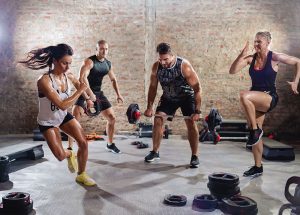
Keto or Vegan?
Keto versus Vegan? Richard Kelly 16th March 2020 Many diets are fads. They sweep into fitness, everyone seems to rave

I want you to hold your right hand out, keep your fingers together and, without using your left hand, take your right thumb as far back as you can.
Now, using your left hand, pull your right thumb back as far as it will go.
Did you notice that with the assistance of your left hand your right thumb went back further? That additional range is called passive range, and you have it at every joint. It’s the range of motion you can’t control through your nervous system. The first part, the part you can move your right thumb through in this example, is called active range.
And the point where active and passive range cross over is where many injuries occur.
You can’t control your joint in passive range. And without control of that joint there’s a very real possibility it could get damaged. Let me give you a real world example. Let’s say someone is trying to lift a heavy box up from the ground, and they can’t normally touch their toes, but when they bend their legs they can get down low enough to get the box from the floor. If their legs lockout before the box has moved from the floor they will put all the load through their back, and if they can’t normally touch their toes, as in this example, that additional range is generated from the passive range in the joints along the spine, as the weight of the box on the ground has acted like your left hand on your thumb, putting pressure on the discs and spinal joints, exposing the back to potential injury.
One of the most common groups who suffer with passive range injuries are dancers. When I say dancers I don’t just mean professional dancers, I mean people who have a background in dance. Most dancers have a high proportion of hyper-mobile joints. These are joints where the person has access to ranges of motion that are not typical. A quick example of this is a back bend. Most people have a back bend range of no more than 25 degrees, whereas those with hyper-mobile low backs will have a far greater range than this. It’s how they are able to get their head to the ground, and why most people can’t.
These dancers are able to access these ranges, meaning they are in active range. The problem occurs due to the fact that in order to match other hyper-mobile dancers or the expectations of the performance they are doing, they use momentum to force their body into passive range, relying on momentum to carry them back out of it. This results in a far bigger injury than your average person would normally get.
But it isn’t just one area of the body dancers will have hyper-mobility, they’ll have it across their body, and they will therefore be more likely to end up in their passive range of motion, and more likely to get injured, if they are not mindful of control.
So why does this make a difference for you? Well, when you squat and try and get as deep as you can, for instance, that last part of the movement where you almost have to bounce down to get into is reliant on passive range of your joints. And if you have ever seen someone squat and their knees appear to travel inwards, with the exception of those with flat feet, that is passive range enabling that movement. Loading passive range is incredibly dangerous because you have no control of it, and without control you can’t ensure that that load goes through the muscles it should, which is ultimately why it causes injury.
On the face of it this would appear to be an argument for limiting range of motion in exercise. And, indeed, this is why some trainers advocate the partial range squats you’ll sometimes see, as opposed to butt-to-heel that others are promoting. But it is possible to train and increase your active range. If you find the crossover point between passive and active range, by doing a safe movement, you can work on maintaining active control of the range through more of the motion of the joint over time. This will increase your active range and, by extension, allow you to work the joint to a fuller range, as well as decrease your chances of an injury at that joint.
For more information on passive and active range, please email richardkellypt@gmail.com

Keto versus Vegan? Richard Kelly 16th March 2020 Many diets are fads. They sweep into fitness, everyone seems to rave

Should you use turmeric? Richard Kelly 9th March 2020 Today’s blog, to the delight of some of you, will be

The Road to 140 Richard Kelly 2nd March 2020 This week’s blog is purely self-indulgent from my perspective. But I

The one thing you should do after lockdown Richard Kelly 14th July 2020 Admit it, the lockdown didn’t go the

Why I believe the government haven’t set a duration for exercising outdoors in the UK during COVID-19 Richard Kelly 6th
You’ll receive all the latest news, posts and information regarding health and fitness.